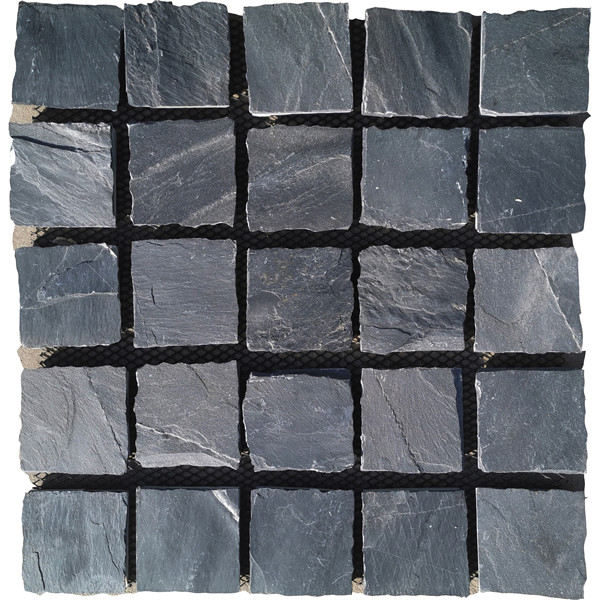Cultured Stone Steps Enhancing Your Home with Elegance and Durability
Introduction Cultured stone steps have become increasingly popular in recent years as homeowners seek to enhance the beauty and functionality of their outdoor spaces. These durable and versatile materials offer a wide range of design options, allowing homeowners to create stunning and long-lasting staircases that complement the aesthetic of their homes and landscapes. In this article, we will explore the many benefits of cultured stone steps, discuss the various design options available, and provide tips for installation and maintenance. Benefits of Cultured Stone Steps Cultured stone steps offer numerous advantages over traditional materials such as natural stone, concrete, or wood. One of the primary benefits of cultured stone is its durability. Made from a mixture of cement, aggregates, and pigments, cultured stone is designed to withstand the elements and resist wear and tear over time. This makes it an ideal choice for outdoor applications, where exposure to rain, snow, and UV rays can take a toll on traditional materials. In addition to its durability, cultured stone is also highly versatile in terms of design. Available in a wide range of colors, textures, and patterns, cultured stone can be customized to suit any aesthetic preference. Whether Ledge stone for sustainable construction prefer a rustic, natural look or a more modern, sleek design, there is a cultured stone option to match your vision. Another benefit of cultured stone steps is their ease of installation. Unlike natural stone, which can be heavy and difficult to work with, cultured stone is lightweight and easy to handle. This makes the installation process quicker and more cost-effective, saving homeowners time and money on labor costs. Design Options for Cultured Stone Steps When it comes to designing cultured stone steps, the possibilities are virtually endless. Whether you are looking to create a grand staircase leading up to your front door or a simple set of steps leading down to your backyard patio, there is a cultured stone option to suit your needs. One popular design option for cultured stone steps is to create a natural stone look. By choosing a cultured stone that mimics the appearance of natural stone, you can achieve the rustic, organic look of real stone without the high cost and maintenance requirements. This design option is perfect for homeowners who want to add a touch of nature to their outdoor spaces. Another design option for cultured stone steps is to create a modern, sleek look. By choosing a cultured stone with a smooth texture and clean lines, you can achieve a contemporary design that complements a modern home or landscape. This design option is ideal for homeowners who prefer a more minimalist aesthetic. In addition to the design of the cultured stone itself, there are also many design options for the layout and configuration of the steps. Whether you prefer a straight staircase, a curved staircase, or a cascading staircase, there are endless possibilities for creating a unique and eye-catching design that enhances the beauty of your outdoor space. Installation and Maintenance Tips When it comes to installing cultured stone steps, it is important to follow the manufacturer's guidelines to ensure a successful and long-lasting installation. Here are some tips for installing cultured stone steps: 1. Prepare the site: Before installing the cultured stone steps, make sure the site is properly prepared. This may involve excavating the area, grading the soil, and creating a stable base for the steps to rest on. 2. Use proper tools: When installing cultured stone steps, be sure to use the right tools for the job. This may include a trowel, a level, a rubber mallet, and other tools specific to working with cultured stone. 3. Follow the manufacturer's instructions: Cultured stone steps come with specific installation instructions provided by the manufacturer. Be sure to read and follow these instructions carefully to ensure a proper installation. 4. Seal the steps: After the cultured stone steps are installed, it is important to seal them to protect against water damage and staining. Choose a high-quality sealer designed for use on cultured stone and follow the manufacturer's guidelines for application. In terms of maintenance, cultured stone steps are relatively easy to care for. To keep your cultured stone steps looking their best, follow these maintenance tips: 1. Clean regularly: To prevent dirt, debris, and stains from building up on the cultured stone steps, clean them regularly with a mild detergent and water. Avoid using harsh chemicals or abrasive cleaners, as these can damage the surface of the stone. 2. Seal as needed: Depending on the type of sealer used and the level of foot traffic on the steps, you may need to reseal the cultured stone periodically. Be sure to follow the manufacturer's recommendations for resealing to maintain the durability and appearance of the steps. 3. Inspect for damage: Periodically inspect the cultured stone steps for signs of damage, such as cracks, chips, or loose stones. If you notice any issues, address them promptly to prevent further damage and ensure the longevity of the steps.  Conclusion Cultured stone steps offer a durable, versatile, and aesthetically pleasing option for enhancing the beauty and functionality of outdoor spaces. With a wide range of design options available, homeowners can create stunning staircases that complement their homes and landscapes while providing long-lasting durability. By following the tips for installation and maintenance outlined in this article, homeowners can enjoy the benefits of cultured stone steps for years to come.
Conclusion Cultured stone steps offer a durable, versatile, and aesthetically pleasing option for enhancing the beauty and functionality of outdoor spaces. With a wide range of design options available, homeowners can create stunning staircases that complement their homes and landscapes while providing long-lasting durability. By following the tips for installation and maintenance outlined in this article, homeowners can enjoy the benefits of cultured stone steps for years to come.